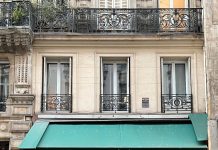Modernism – which can be loosely defined as a movement that marked a break with the past – radically changed art, literature, performance and the built environment. It got a big break in 1922 with the publication of James Joyce’s Ulysses and TS Eliot’s The Waste Land. Eliot’s mentor, Ezra Pound, called it “year zero” on his calendar – though not because of poetry or art but because his hero, the fascist leader Benito Mussolini, marched on Rome.
The 1920s were also when Frank Pick and Charles Holden began to redesign the London underground and new ideas about architecture began to flow in from Germany and the Nordic countries. From office blocks built for the glassmaker Pilkington in St Helens, Merseyside, to a Mormon church in Belfast to Cornwall’s Saltash Library (dubbed “the most Le Corbusier building in the country”), modern buildings enliven civic spaces that would be far duller without them.
The UK is also home to modernist trains, parks and gardens, piers, cinemas, service stations, factories and fonts. The ubiquity of modernism’s influence makes it a wonderful means of opening up parts of the country you might otherwise bypass or ignore. Here are a dozen events and key landmarks to celebrate the centennial.
City of London churches
Fragments is a celebration of the 100th anniversary of the modernist classic The Waste Land, including talks, readings, video, and live music from diverse cultures, taking place in 22 churches across the City of London. Two of the churches feature in the poem. Walk between the venues on modernist trails mapped out by TS Eliot in verse.
7-12 April, tickets from thewasteland2022.com
Blackpool Tower
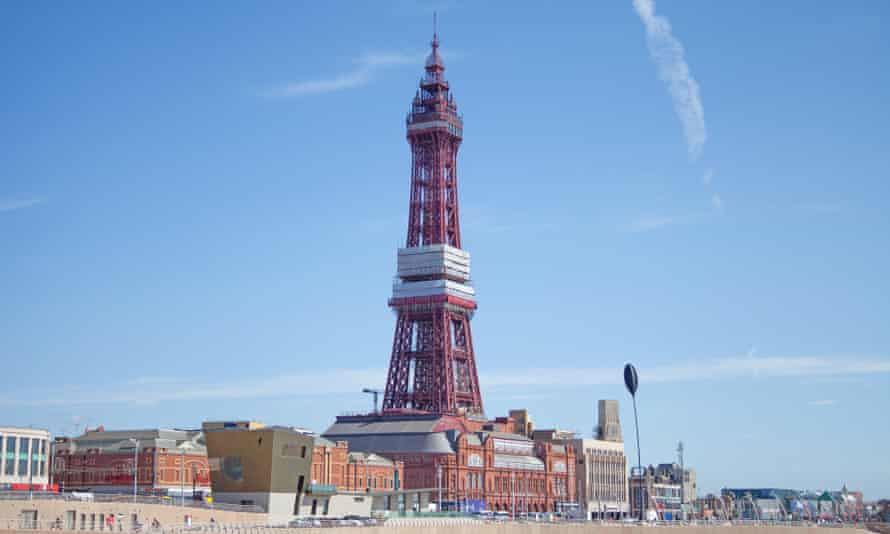 Photograph: Alex West/Getty Images/iStockphoto
Photograph: Alex West/Getty Images/iStockphoto
Built in 1894 and at the time the tallest human-made structure in the British Empire, the 158 metre (518ft) cast iron and steel structure was inspired by the Eiffel Tower – the construction that arguably started the modern era. Its designers, architectural practice Maxwell and Tuke, also built the taller New Brighton Tower, dismantled and sold to scrap dealers in the 1920s. Blackpool’s forward-thinking burghers also employed Joseph Emberton, an architect who represented Britain at the 1932 Modern Architecture International Exhibition at New York’s Museum of Modern Art, to redesign the Pleasure Beach.
From £15, blackpooltower.com
Laugharne and Llansteffan, Carmarthenshire
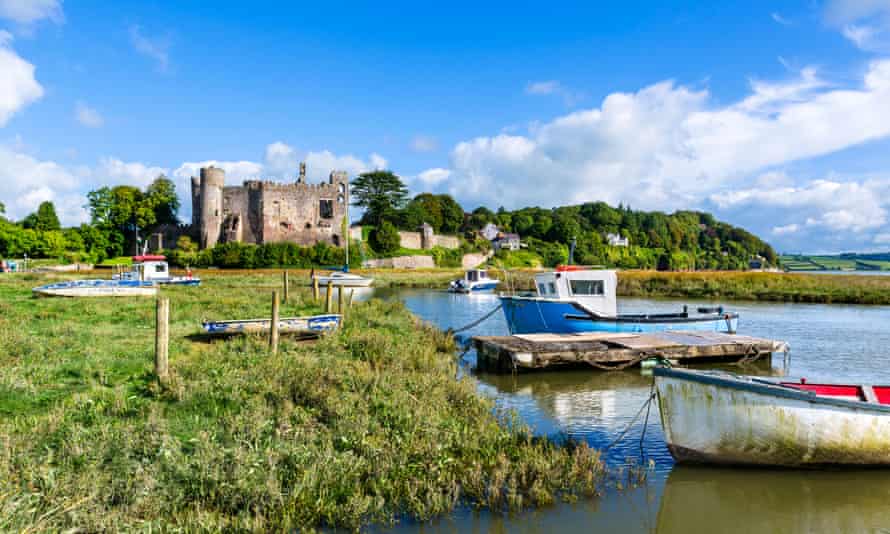 Laugharne Castle. Photograph: Ian Dagnall/Alamy
Laugharne Castle. Photograph: Ian Dagnall/Alamy
Walk the Wales Coast Path between Laugharne and Llansteffan, admiring the Tâf and Tywi estuaries, and visiting the homes and landscapes that inspired two great Welsh modernists. Dylan Thomas, who attended the 1936 International Surrealism Exhibition in Mayfair (where he allegedly went around offering people teacups full of string), lived in Laugharne. Lynette Roberts, born in 1909 in Buenos Aires to Australians of Welsh descent, married fellow poet Keidrych Rhys at Llansteffan church – their best man was Dylan Thomas – and settled in nearby Llanybri.
Duchess of Hamilton train, National Railway Museum, York
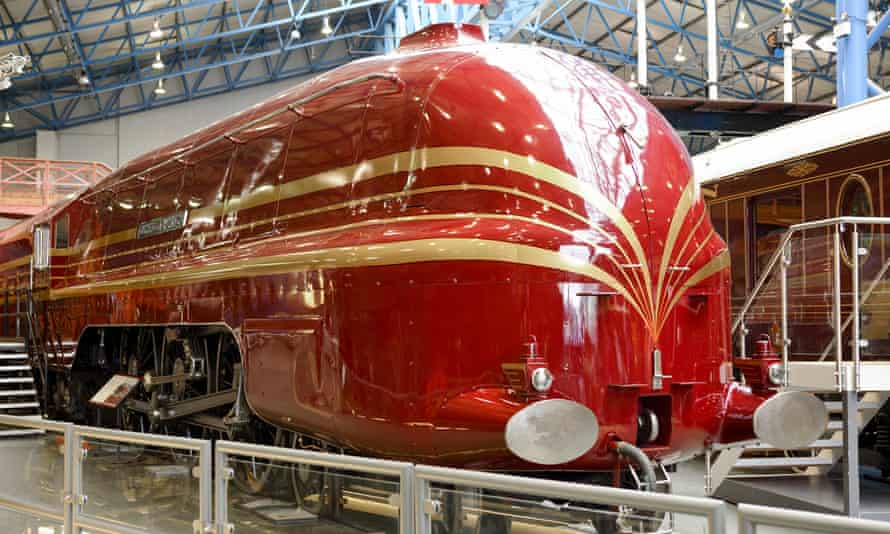 Photograph: Peter Wheeler/Alamy
Photograph: Peter Wheeler/Alamy
This magnificent Streamline Moderne steam locomotive, built by the LMS Crewe Works in 1938, was shipped to the New York World’s Fair the following year as a futuristic example of British engineering prowess. Painted black during the second world war, it had its streamlined nose clipped in 1947 and was only saved from the scrapyard by Billy Butlin, who installed it at his Minehead holiday camp. The not quite so aerodynamic Mallard, built in the same year, is also at the museum.
Free, but tickets must be booked in advance, railwaymuseum.org.uk
Coventry Cathedral
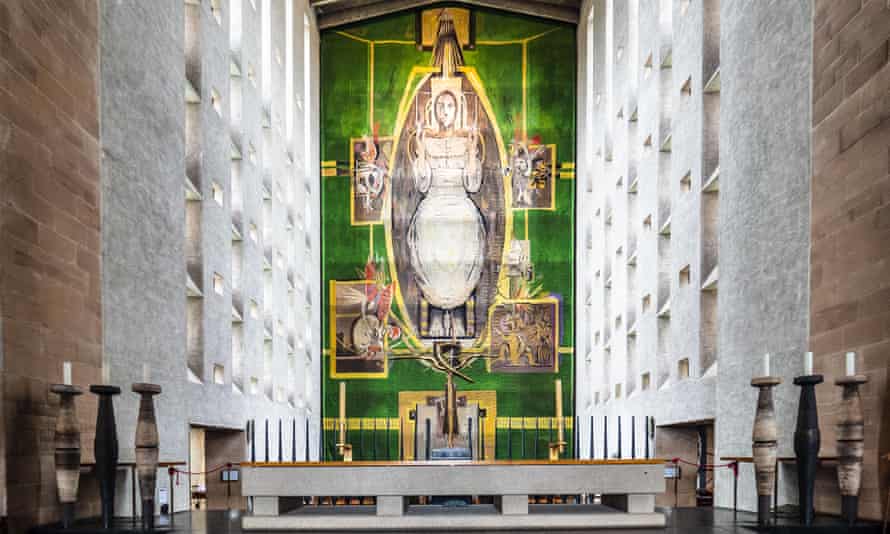 Tapestry of Christ in Glory by Graham Sutherland. Photograph: Robert Evans/Alamy
Tapestry of Christ in Glory by Graham Sutherland. Photograph: Robert Evans/Alamy
The UK City of Culture’s most celebrated modernist building was built between 1956 and 1962, on the site of a medieval Gothic cathedral destroyed by German bombers in November 1940. Scottish architect Basil Spence designed the new cathedral alongside the old, symbolising death and resurrection. The building’s clean lines, unashamed bulk, zigzag walls and polished stone floor are enhanced by Graham Sutherland’s Christ in Glory in the Tetramorph tapestry, Baptistry Window by John Piper and Patrick Reyntiens and Sir Jacob Epstein’s imposing sculpture of St Michael’s Victory over the Devil.
Free, but donations welcome
Modernism gallery, Victoria and Albert Museum, London
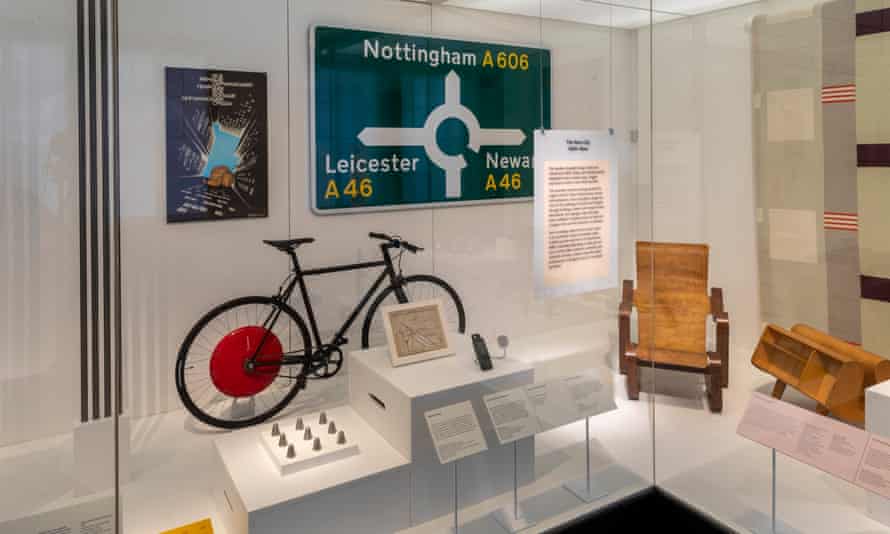 Photograph: Peter Kelleher/Victoria and Albert Museum
Photograph: Peter Kelleher/Victoria and Albert Museum
Can’t make it over to Weimar or Helsinki? An hour spent absorbing the well chosen selection of modernist objects of desire in the V&A’s room 74 is a decent substitute. Classic items on show include a 1924 MT8 table lamp, sometimes called the “Bauhaus lamp”, by Wilhelm Wagenfeld; a 1927 MR20 armchair, designed by Ludwig Mies van der Rohe; and a 1937 Savoy vase designed by Alvar Aalto.
Free, but book tickets in advance, vam.ac.uk
Beyond Bloomsbury
Literary and artistic modernism was not restricted to a couple of posh squares in London’s WC1. Jessie Etchells, born in Newcastle, studied art in Stockport before working at the Bloomsbury Group’s Omega Workshops in Fitzrovia. The Sitwells, who defined themselves in opposition to the Bloomsbury set, were from Scarborough and had their country seat at Renishaw Hall, near Sheffield. Sculptor Marcel Gimond, who did busts of Vanessa Bell and Roger Fry, was a metalworker’s son from the Ardèche, in southern France. See portraits of the whole clan and responses by Sahara Longe at Beyond Bloomsbury: Life, Love and Legacy at York Art Gallery, until 5 June 2022.
£10 adults
Dartington Hall Estate, Devon
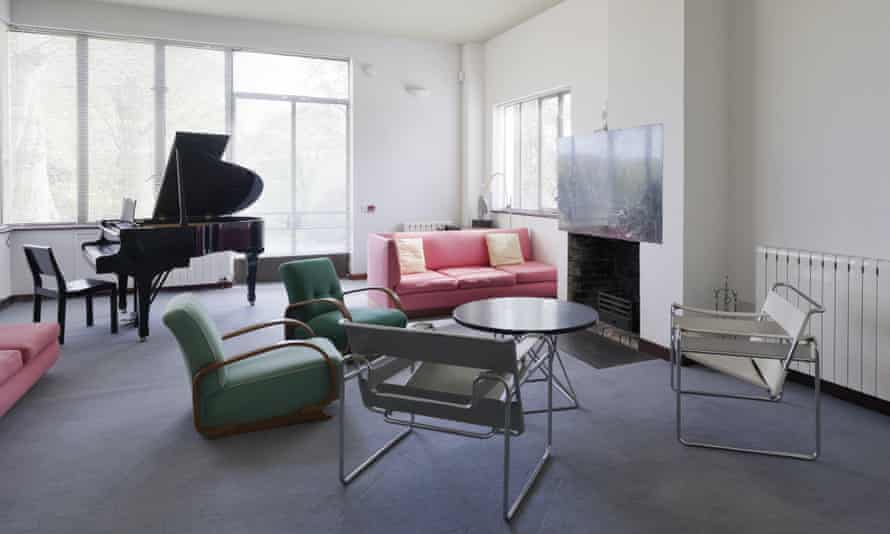 The Drawing Room at High Cross House, Dartington. Photograph: The National Trust Photolibrary/Alamy
The Drawing Room at High Cross House, Dartington. Photograph: The National Trust Photolibrary/Alamy
There is no British Bauhaus, but High Cross House, the headmaster’s residence at the former Dartington Hall School, and the cottages on Warren Lane are pretty close. The rolling hills around Totnes are about as far from industrial Germany as you can get, and these hard edges and white walls really stand out here.
Tinside Lido and Plymouth city centre
 Tinside lido on Plymouth Hoe. Photograph: Roy Perring/Alamy
Tinside lido on Plymouth Hoe. Photograph: Roy Perring/Alamy
Modernism looks best in the sunshine, which perhaps explains the survival of so many seafront cinemas and lidos. Built in 1935 by John Wibberley, Tinside Lido began life as the Ladies’ Bathing Place, with an entry fee of one penny. It reopens to the public on 30 April. While the lido is usually described as art deco, Plymouth city centre is often called “late classicism”, while some see Armada Way and its buildings as half-baked brutalism.
Tube stations, London
In his newly published gazetteer, Modern Buildings in Britain, author Owen Hatherley describes Piccadilly Circus station – built between 1925 and 1928 by Charles Holden – as a “sort of heavenly anteroom in a perpetual rotating motion”. Take a modernism-themed ride on the underground, stopping to admire the stations at Arnos Grove, Barking, Chiswick Park, Loughton and the Central line’s Hainault Loop, as well as more recent modernist-influenced efforts, such as Canary Wharf and Westminster on the Jubilee line.
The Homewood, Esher, Surrey
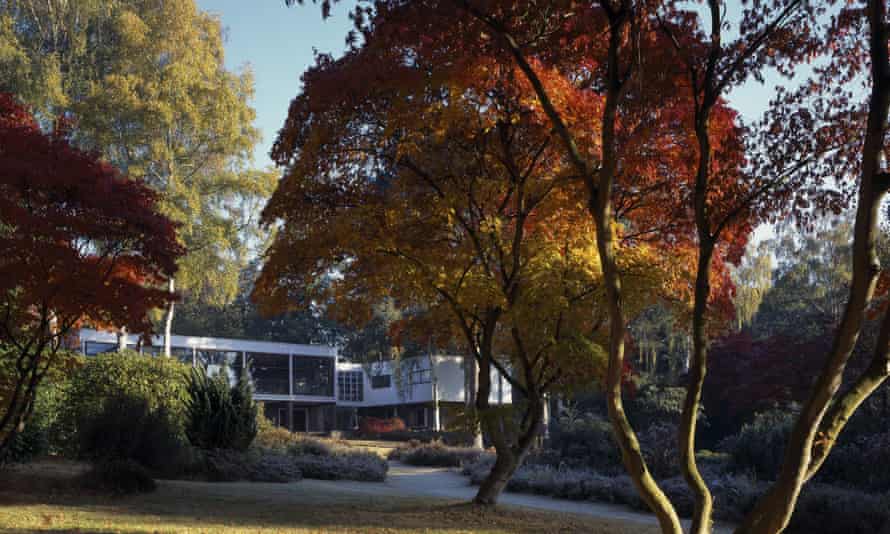 Photograph: The National Trust Photolibrary/Alamy
Photograph: The National Trust Photolibrary/Alamy
This National Trust property was designed by the architect Patrick Gwynne for his family and completed in the summer of 1938. Gwynne lived in the house until his death in 2003. The villa is a masterwork of domestic modernism, with a dreamy woodland garden designed to suggest the layers of a painting.
Reopens to the public for tours from 23 April. Adults £11, children £5.50, nationaltrust.org.uk
Hope Street, Liverpool
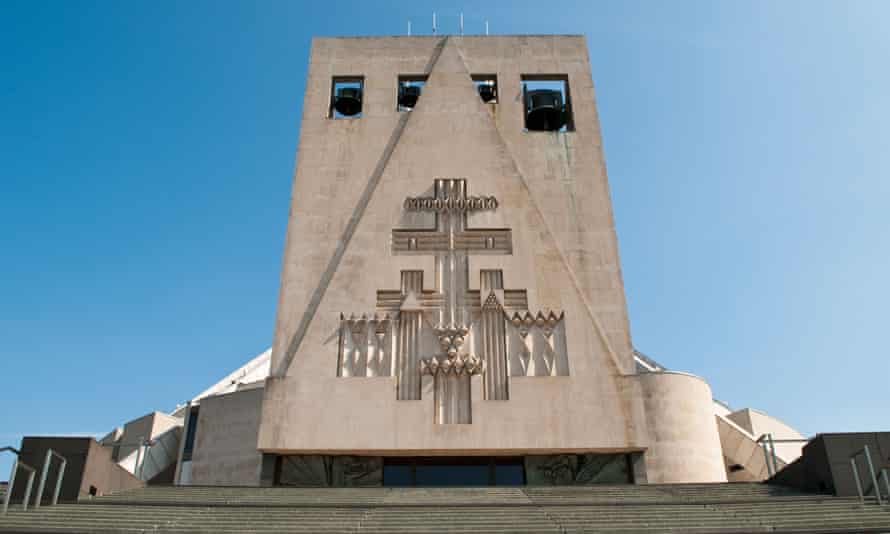 Liverpool’s Metropolitan Cathedral. Photograph: Lana Rastro/Alamy
Liverpool’s Metropolitan Cathedral. Photograph: Lana Rastro/Alamy
The great port city has lots of fine modern buildings, from the tunnel ventilation shafts to the Tate & Lyle Sugar Silo at Huskisson Dock to Speke Aerodrome (now a hotel). Hope Street is a lovely street to walk along, drink or dine on (it’s one of Liverpool’s chief gastronomic gauntlets), and bookending its fine Georgian townhouses are the dashing, wigwam-shaped Metropolitan Cathedral, Everyman theatre, Philharmonic Hall, and Giles Gilbert Scott’s Anglican Cathedral – a sublime melding of neo-Gothic and modernism.

